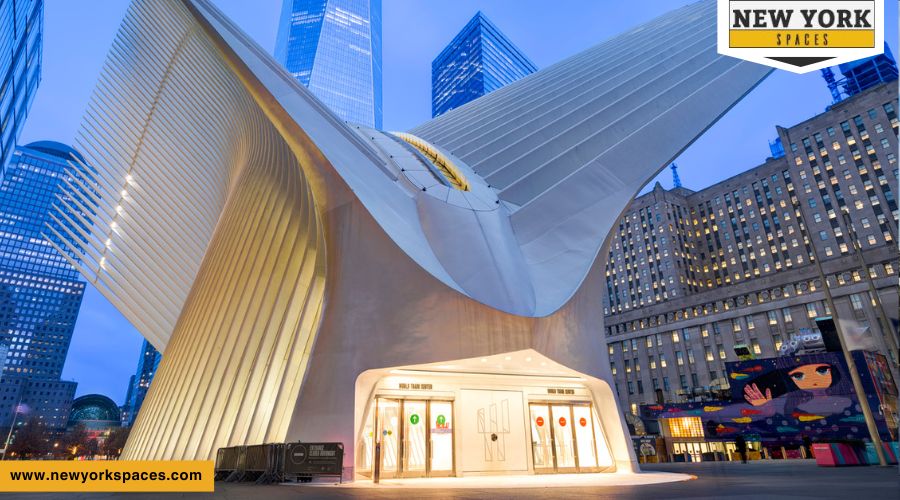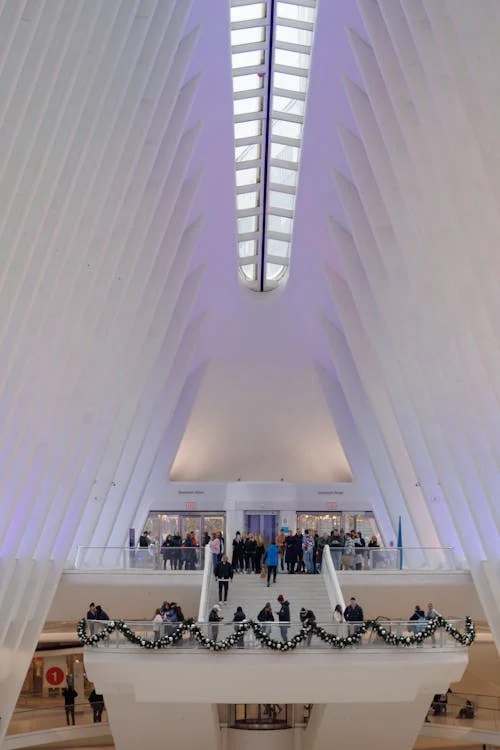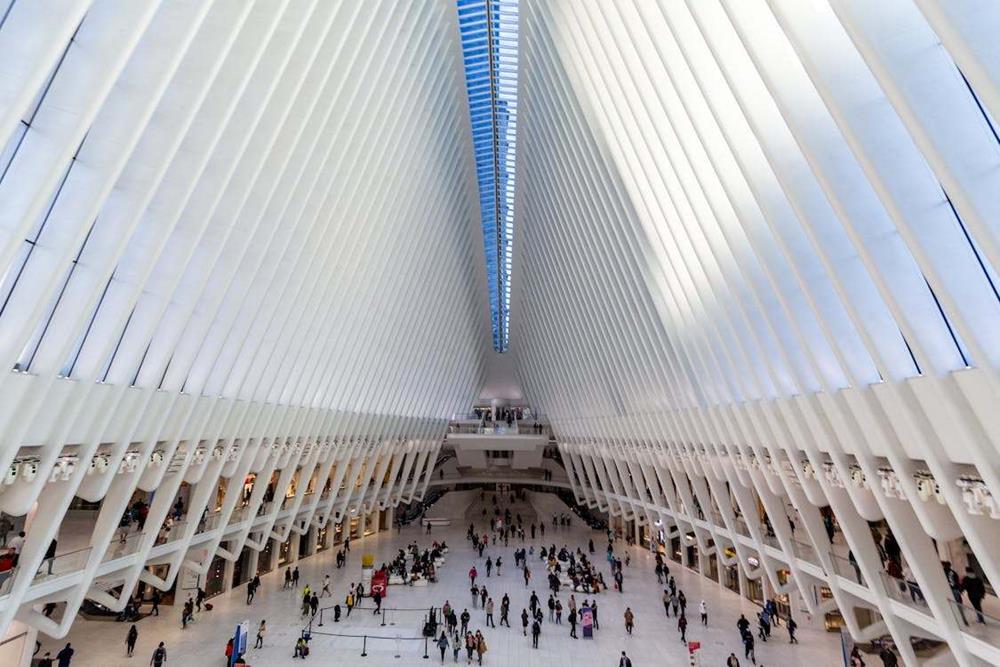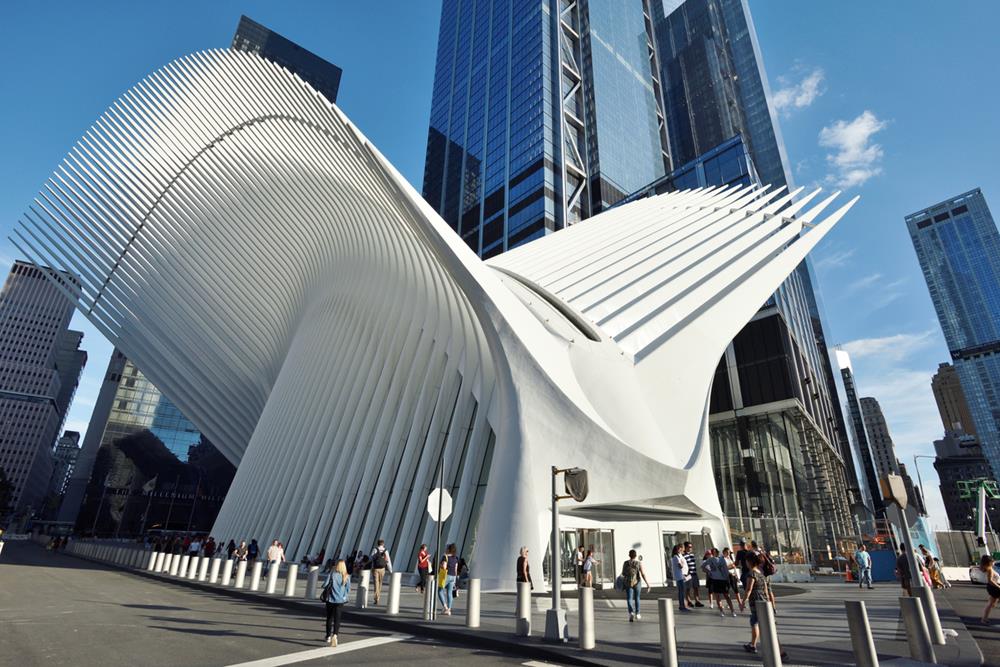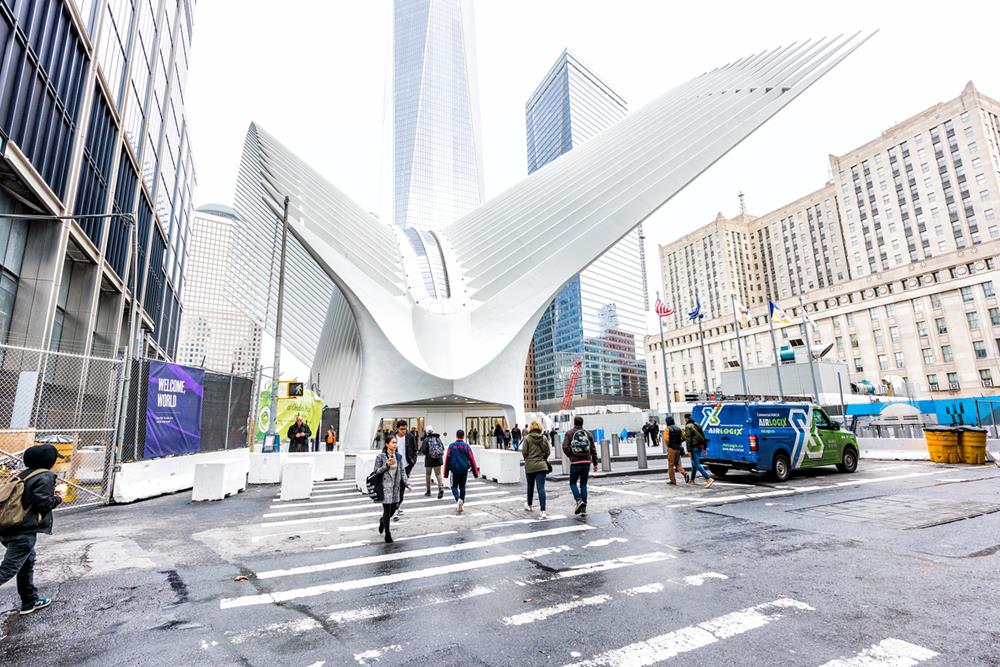In the heart of a bustling metropolis stands the Oculus Center, a testament to the boundless possibilities of human creativity and technological advancement. This iconic structure, more than just an architectural masterpiece, serves as a beacon of innovation, education, and community engagement. Through this post, we embark on a journey to explore the essence of the Oculus Center, from its visionary inception to its transformative impact on society.
The Genesis of the Oculus Center
Conception Era – The Spark of Innovation
This period marks the birth of the Oculus Center concept, where the initial idea was conceived by a group of visionaries aiming to merge architecture with cutting-edge technology. The focus here is on the early discussions, the inspiration behind the project, and the establishment of a core mission to redefine user experiences. Before moving forward, extensive feasibility studies were conducted to assess the practicality of the ambitious plans. This subsection delves into the analysis of potential sites, initial design concepts, and the exploration of technological needs and innovations required to realize the vision.
Design Era – Blueprint of the Future
With a feasible project in sight, a series of collaborative workshops brought together architects, technologists, and futurists. These sessions were dedicated to fleshing out the initial concepts into tangible designs, emphasizing sustainable and innovative architectural practices. This phase saw the meticulous planning of how technology would be woven into the fabric of the building. The focus was on selecting technologies that would not only enhance the structure’s functionality but also ensure it remained adaptable to future advancements.
Development Era – Overcoming Challenges
Marking the transition from design to reality, this era was characterized by groundbreaking ceremonies followed by the actual construction. It covers the logistical, engineering, and technological challenges faced during the building phase and the solutions implemented to address them. Throughout the construction, continuous feedback loops between the construction teams, architects, and technologists led to iterative adjustments. This adaptability ensured that emerging technologies and unforeseen structural challenges could be accommodated within the project’s scope.
Inauguration Era – The Dawn of a New Age
As construction neared completion, this period focused on the final preparations for the center’s grand opening. It involved installing the technological systems, curating the initial exhibitions, and preparing the center for public engagement. The grand opening of the Oculus Center was a milestone event, celebrated with a series of inaugural activities that showcased the center’s capabilities. The initial reception from the public, industry experts, and the media highlighted the center’s success in achieving its visionary goals.
Legacy Era – Impact and Future Directions
Community Integration and Early Impact: Following its opening, the Oculus Center quickly became an integral part of the community. This era examines the center’s initial impact, including how it has served as an educational resource, a hub for innovation, and a model for future architectural and technological projects. As the Oculus Center continues to operate, it remains focused on evolving with advancements in technology and expanding its horizons. Plans for future expansions, technological upgrades, and new programs are part of this ongoing era, ensuring the center remains at the forefront of innovation.
The development of the Oculus Center, viewed through the lens of distinct eras, illustrates a journey marked by visionary ambition, collaborative innovation, and a continuous drive to push the boundaries of what is possible. Each era, from conception to the ongoing legacy, has contributed layers of depth to the center’s mission, making it not just a physical space but a symbol of progress and a beacon for the future.
Architectural Marvel – The Oculus Center
Design Inspiration and Philosophy
- Conceptual Genesis: Santiago Calatrava’s design for the Oculus Center is deeply symbolic, drawing inspiration from the image of a bird taking flight. This motif is not just an artistic choice but a powerful emblem of hope and renewal, particularly poignant in the context of its location near the site of the World Trade Center attacks. The design’s aspiration is to uplift the spirit, serving as a reminder of resilience in the face of adversity and acting as a beacon of optimism in New York’s urban landscape.
- Harmony with Nature: The Oculus Center challenges conventional architectural norms through its organic form, characterized by sweeping curves and a radiant white exterior. Calatrava’s approach integrates elements of the natural world into the urban fabric, creating a structure that appears almost alive. This harmony with nature is achieved through the building’s fluid design, which mimics natural forms and captures the interplay of light and shadow, thereby softening the hard lines of the surrounding cityscape.
Engineering and Construction Challenges
- Structural Ingenuity: The engineering behind the Oculus Center is as innovative as its design. The building’s unique shape, reminiscent of a bird’s wings in mid-flight, is supported by a series of rib-like structures. These not only provide the necessary support for the sweeping canopy but also introduce a dynamic sense of movement and openness to the space. This structural ingenuity was a significant challenge, requiring precise calculations and innovative construction techniques to bring Calatrava’s vision to life.
- Technological Integration: The construction of the Oculus Center incorporated cutting-edge technologies to ensure the building’s long-term resilience and functionality. From advanced materials that contribute to the structure’s durability to state-of-the-art climate control and safety systems, every aspect of the Oculus is designed with sustainability and technological sophistication in mind. This integration of technology was crucial in overcoming the complex engineering challenges posed by the building’s avant-garde design.
Sustainable Design and Material Selection
- Eco-Friendly Innovations: The Oculus Center sets a new benchmark for sustainable architecture with its array of eco-friendly features. Energy-efficient lighting reduces the building’s carbon footprint, while innovative climate control systems maintain a comfortable interior environment with minimal environmental impact. These green innovations underscore the project’s commitment to sustainability, aligning with broader goals of environmental stewardship and resource conservation.
- Material Curation: The selection of materials for the Oculus Center was a meticulous process, aimed at enhancing both the building’s aesthetic appeal and its environmental sustainability. The use of white marble and glass not only contributes to the structure’s luminous quality but also reflects a commitment to using durable and sustainable materials. This careful curation underscores the project’s dedication to blending form with function, beauty with responsibility.
Aesthetic and Functional Harmony
- Light and Movement: One of the most striking features of the Oculus Center is its ability to harness natural light, creating an interior that feels both expansive and inviting. The building’s design facilitates a smooth flow of movement, guiding visitors through the space with an almost choreographed precision. This interplay between light and movement embodies Calatrava’s philosophy of creating spaces that are not only functional but also aesthetically uplifting, enhancing the everyday experiences of those who pass through the Oculus.
- Cultural and Artistic Significance: Beyond its role as a transportation hub, the Oculus Center stands as a significant cultural and artistic achievement. Its unique form and the symbolic depth of its design contribute to its status as a modern architectural landmark. The Oculus invites contemplation and engagement, challenging viewers to consider the role of architecture in shaping not only our physical surroundings but also our collective experiences and memories. In this way, the Oculus transcends its practical function, becoming a space where architecture, art, and human experience intersect.
Inside the Oculus Center – A Fusion of Innovation and Sustainability
Immersive Experiences and Interactive Exhibits
Upon entering the Oculus Center, visitors are greeted by an array of interactive exhibits that serve as gateways to discovery. Each exhibit is carefully curated to blend educational content with engaging multimedia elements, making learning an exciting adventure for all ages.
- Virtual Reality (VR) Zones: The VR zones within the Oculus Center offer immersive experiences that transport visitors to virtual worlds. Whether exploring distant galaxies, walking through historical events, or diving into the depths of the ocean, these VR experiences make the impossible within reach, facilitating a deep understanding of complex subjects.
- Augmented Reality (AR) Learning: Augmented reality stations scattered throughout the center bring a new dimension to education. By overlaying digital information onto the real world, AR stations provide interactive learning opportunities that enhance the understanding of science, art, and history, making education a tangible and interactive experience.
State-of-the-Art Facilities for Innovation and Research
The Oculus Center is not just a public exhibit space but also a hub for innovation, hosting research labs equipped with the latest technology. These labs provide a space for scientists, engineers, and creators to conduct groundbreaking research, develop new technologies, and collaborate on innovative projects. Designed to foster collaboration and creativity, the center’s workspaces are equipped with modular furniture, smart boards, and collaborative tech tools. These spaces encourage teamwork and idea-sharing, supporting projects that range from digital art installations to tech start-up incubation.
Technology-Driven Learning and Exploration
The center’s corridors and halls are lined with interactive digital displays that offer bite-sized learning experiences. These displays cover a wide range of topics, allowing visitors to engage with content that matches their interests, from environmental science to digital artistry. The Oculus Center runs a diverse range of educational programs and workshops designed to inspire the next generation of innovators. These programs, ranging from coding bootcamps to design thinking workshops, are tailored to different age groups and skill levels, ensuring that learning is accessible to everyone.
Commitment to Sustainability and Environmental Stewardship
The Oculus Center leads by example in environmental sustainability, incorporating energy-efficient lighting, heating, and cooling systems. These systems not only reduce the center’s carbon footprint but also serve as a live demo of sustainable practices in action. Integrating nature into its architectural design, the center features indoor gardens, green walls, and water features. These green spaces not only purify the air and reduce stress for visitors and staff but also promote biodiversity and serve as a reminder of the center’s commitment to environmental stewardship.
Sustainability is a recurring theme in the center’s exhibits and educational programs. Through interactive displays and workshops, visitors learn about renewable energy, conservation, and sustainable living practices, empowering them to make environmentally conscious decisions in their daily lives.
A Microcosm of Future Possibilities
Inside the Oculus Center, every corner and every exhibit is a testament to the harmonious blend of technology, design, and sustainability. It stands as a microcosm of future possibilities, demonstrating how spaces can be designed to foster learning, creativity, and environmental responsibility. As visitors explore this dynamic environment, they are not just spectators but active participants in a journey of discovery and innovation, inspired to carry forward the principles of sustainability and creativity in their own lives.
A Hub of Activity – The Oculus Center as a Catalyst for Innovation
Diverse Events and Engagements
- International Conferences and Summits: The Oculus Center has become a favored venue for hosting international conferences and summits, bringing together experts, industry leaders, and visionaries from around the globe. These events cover a wide range of topics, from advancements in technology and science to global sustainability issues, facilitating a cross-pollination of ideas and fostering global partnerships.
- Exhibitions That Merge Art and Technology: The center regularly features exhibitions that showcase the intersection of art and technology. These exhibitions display works that use digital media, interactive installations, and technology-driven art, highlighting the creative potential of technological advancements and inspiring visitors to see technology through a creative lens.
Community Engagement and Education
- Community Workshops and Learning Sessions: With a strong commitment to community engagement, the Oculus Center offers an array of workshops and learning sessions designed for local residents of all ages. From coding workshops for kids to technology literacy sessions for seniors, these programs aim to democratize access to technology and empower community members with new skills.
- Educational Programs for Schools and Institutions: The center collaborates with schools and educational institutions to provide tailored educational programs. These programs complement traditional curriculums with hands-on learning experiences in science, technology, engineering, arts, and mathematics (STEAM), encouraging students to apply classroom knowledge in real-world contexts.
Innovation Showcases and Collaborative Projects
The Oculus Center is often chosen as the launchpad for new technologies and innovations. Tech companies and startups take advantage of the center’s state-of-the-art facilities to debut their latest products, from cutting-edge gadgets to software solutions, providing a glimpse into the future of technology. The center hosts hackathons and collaborative projects that bring together developers, designers, and innovators to tackle challenges and create new solutions. These events are not only a testament to the power of collaboration but also serve as incubators for new ideas and ventures.
Forums for Thought Leadership
Symposiums and Panel Discussions: Regular symposiums and panel discussions at the Oculus Center gather thought leaders to debate and dissect the future of innovation, design, and society. These forums provide a platform for exchanging diverse perspectives, challenging conventional wisdom, and shaping the discourse on future trends and ethical considerations in technology and design.
Networking Events and Social Gatherings: The center also facilitates networking events and social gatherings, providing a relaxed atmosphere for professionals, hobbyists, and enthusiasts to connect, share experiences, and forge new relationships. These events strengthen the community of innovators and creators, building a supportive ecosystem that spans across industries and disciplines.
Testimonials and Transformative Experiences
- Visitor Feedback and Stories: The impact of the Oculus Center is perhaps most vividly captured in the stories and feedback from its visitors. From students who discovered their passion for technology to professionals who found inspiration for their next project, the center has touched the lives of many. These personal testimonials highlight the transformative power of the center, not just as a physical space but as a catalyst for personal and professional growth.
- Community Impact: Beyond individual stories, the cumulative impact of the Oculus Center on the community and industry is significant. By fostering an environment of learning, innovation, and collaboration, the center contributes to the growth of the local economy, supports the development of a skilled workforce, and positions itself as a leader in the global dialogue on the future of technology and design.
The Oculus Center transcends its role as a physical hub, embodying a movement towards a future where technology, creativity, and community converge. Through its diverse array of events and programs, the center not only showcases the potential of technology and design but also actively participates in shaping that future, one event, one workshop, and one visitor at a time.
Impact and Future Prospects of the Oculus Center
Transforming Educational Paradigms
The Oculus Center has redefined the landscape of educational experiences by integrating immersive technologies and interactive learning methodologies. It serves as a pioneering model for educational institutions seeking to incorporate technology into their curriculums. By making complex subjects accessible and engaging through virtual reality, augmented reality, and interactive installations, the center has demonstrated the potential to enhance understanding, retention, and enthusiasm for learning among students of all ages. The success of its educational programs has sparked a reevaluation of traditional teaching methods, encouraging educators worldwide to adopt more interactive and technology-driven approaches to learning.
Catalyzing Technological Innovation
As a hub for technological advancement, the Oculus Center has significantly influenced the tech industry by providing a platform for the launch of groundbreaking technologies and fostering a collaborative environment for innovation. Its state-of-the-art facilities have attracted startups and established companies alike to prototype, test, and launch new products. The center’s role in facilitating connections between innovators, investors, and industry leaders has catalyzed the development of new technologies and solutions, positioning it as a key player in driving forward the frontiers of innovation.
Enriching the Cultural Landscape
The Oculus Center has also made a substantial impact on the arts and culture sector by blurring the lines between technology, art, and design. Through its innovative exhibitions and installations that combine digital media with creative expression, the center has become a destination for artists and creators seeking to explore new mediums and audiences. Its commitment to showcasing technology-driven art has enriched the cultural landscape, providing a new platform for artistic exploration and dialogue. The center’s influence extends beyond its walls, inspiring other cultural institutions to embrace technology in curating and presenting art.
Shaping Future Urban Spaces
The architectural design and operational philosophy of the Oculus Center have set new benchmarks for urban development and public spaces. Its emphasis on sustainability, community engagement, and technological integration serves as a blueprint for future innovation centers and public buildings. By successfully integrating green spaces, energy-efficient systems, and public engagement areas within its design, the Oculus Center has demonstrated how urban spaces can be both innovative and sustainable. This holistic approach to design and functionality is influencing urban planners and architects to incorporate similar principles in future projects, contributing to the evolution of smarter, more inclusive urban environments.
Expanding Horizons
As the Oculus Center looks to the future, its commitment to innovation remains unwavering. The planned expansion of exhibits and programs reflects a continuous quest to explore new technologies and ideas. With a forward-looking approach, the center aims to not only keep pace with technological advancements but to anticipate future trends and prepare visitors to navigate and shape the emerging landscape. By continually updating its offerings and leveraging cutting-edge technologies, the Oculus Center is poised to remain at the forefront of innovation, education, and cultural transformation, inspiring change and progress across industries and communities.
Conclusion
The Oculus Center embodies the zenith of human creativity and the vast potential that unfolds when ambition and innovation converge. More than a mere architectural marvel, it stands as a testament to the collective human spirit’s ability to push boundaries and envision a future brimming with possibilities. As a beacon of progress, the center not only illuminates the path towards a more innovative and interconnected world but also inspires us to dream bigger, challenging us to transform those dreams into reality. In this way, the Oculus Center represents not just a place, but a continuous journey towards a brighter, more inventive future.

